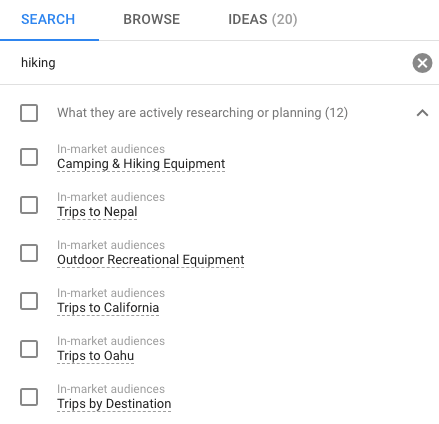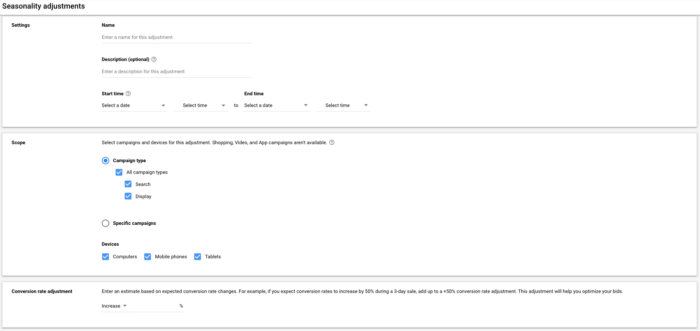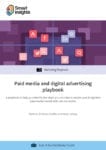With a little planning, you can tweak your campaigns to extract the most data, brand loyalty, and sales.
The new decade offers an exciting market for many businesses. With so many consumers actively shopping online, it’s the perfect opportunity for digital ads and promotions to lure consumers away from the competition.
Unfortunately, when they create digital ad campaigns, some marketing departments fall into the trap of setting and forgetting. That often means your campaigns become outdated and irrelevant to consumers — and that’s not to mention the tech you’re using to advertise.

The tech industry continues to change at a rapid pace. If your ads aren’t keeping up, you’re leaving money on the table. Automation, artificial intelligence, and machine learning are all aspects of the online ad scene that have changed drastically over the past year. There are also entirely new platforms appearing all the time, such as TikTok, whose ad power will go untapped if you're using the same playbook year after year.
Of course, what good is this advice if your latest campaigns are set? Once they're locked and loaded, adding in new tech, tools, and tactics certainly doesn't seem like a simple task. Luckily, changing your ad strategy on the fly isn’t as daunting as it might seem.
Tips on how to optimize your campaigns
There are plenty of small ways to make a big impact on your ad campaigns. Even seemingly complex new tools like AI and automation can be layered into a campaign in a matter of minutes. The key is knowing how to pull it off. Here are six ways you can tweak your campaigns to extract the most data, brand loyalty, and sales:
1. Take advantage of in-market and affinity audiences
Let's say your campaign is going well, but you want to scale it to reach a higher volume of consumers. Going after affinity or related audiences can expand your reach, especially during peak seasons. Platforms like Google Ads enable you to cater to your ad creatives to audiences with similar interests or behaviors.
As you watch online behavior in real-time, look for patterns and preferences in your established audiences. You can then use targeting within your ad platforms to target related audiences and get your product in front of other interested eyes.
Let's say you're selling hiking boots and want to serve your product to new audiences that might be more inclined to purchase during a specific period. You can use your ad platform's targeting to look for audiences that are shopping for complimentary items like tents, coats, or even running shoes. In-market audiences allow marketers to get creative while casting a wider, more efficient net for interested shoppers. You might have a higher ad spend due to the increased reach, but the higher-than-average number of transactions should make up for it.

2. Inform your automation
Google is able to leverage AI-powered optimizations within each of your campaigns. This is especially useful when it comes to making real-time adjustments to your campaigns, helping you get the most bang for your buck. It takes into consideration a variety of components, including device, personal geographic location, and the browsing history of each user. There are even rumors it considers weather and stock market performance — basically, it takes a lot of things into consideration that humans simply cannot.
If you’re using automation to help your campaigns, be sure to inform your bid strategies of upcoming promotions. It's quite common for marketers to overlook this important aspect. On the Google Ad platform, for example, this is handled through Seasonality Adjustments. These updates ensure that the AI and machine learning that pull campaign optimization levers will be more aggressive during your highest promotional points. Google offers instructions to help you quickly upload relevant dates before it’s too late.
Download our Individual Member Resource – Paid media and digital advertising playbook
This paid media planning guide will provide marketers with a structured approach to paid media planning to help exploit these opportunities while managing the risks.
Access the Paid media and digital advertising playbook
3. Leverage first-party data
Don't forget about your existing customers. After all, 40% of an online brand’s revenue comes from 8% of its users. You should be targeting your loyal customers to encourage repeat business, but you can also use the data from these customers to find lookalike audiences. Leverage your CRM to target individuals who resemble your highest-value customers. This tactic is especially useful with social ads, where people are more easily grouped into specific interests and categories.
If you don’t have your own data, you can use Google Ads (or your platform of choice) to drill down. Audience Insight reporting within the audience manager will allow you to pinpoint your best-performing customers based on age, gender, in-market indexes, affinities, location, and even parental status. A good rule of thumb is to focus on the top 20% of your customers when targeting and creating lookalike groups.
4. Personalize whenever possible
About 51% of Gen Xers and 67% of Millennials expect all offers from companies to be personalized to them. Leveraging personalization tactics such as Google and Microsoft’s ad customizers and targeted remarketing tools can be an extremely powerful way to provide tailored, personalized ads at scale.
Ad customizers allow you to insert a formula code into an ad so that different variables are added to the copy depending on specific criteria. If you were running a national pizzeria brand, for example, ad customizers would allow you to create one set of ads that would include local information every time someone searched for pizza within a certain radius of one of your locations. It’s a relatively simple way to catch a customer’s eye, and it can easily save you hours of work to build out one set of dynamic, location-specific ad copy rather than hundreds of static ads.

5. Use tools to make video creation painless
According to Facebook, videos hold five times more attention than static images. Unfortunately, original video content tends to be expensive, resource-heavy, and out of date. How are you supposed to create videos on the fly for updated, optimized campaigns?
Thankfully, there are tools available to take static assets and turn them into high-quality videos with minimal effort. Facebook’s video kit is one of the more popular options, but it’s not the only one. Apps such as Videoshop, Quik, and Legend offer equally unique takes on the video medium that can help you create dynamic, video-centric ads with relative ease. In some cases, you can create a video for a new target audience in as little as 10 minutes.
6. Factor in longer approval times
You're probably used to having ads approved on Facebook, Google, and other platforms within hours. During busy online shopping periods, such as Black Friday, back to school, and Christmas, platforms are usually inundated with creatives. As a result, you'll want to get your ads in early to get ahead of the approval process. There’s nothing worse than trying to launch an ad and then having the approval process take days rather than hours. During peak buying seasons, expect approvals to take a few days.
While your ads are getting uploaded and approved well ahead of the deadline, spend some time thinking about scheduling launch and pause times. Some added upfront planning means there's one less thing to worry about as you execute the rest of your campaign.
The beauty of these tweaks is that they don’t take long to master. Your ad copy and promos may be written and your campaigns may be set up, but a few last-minute adjustments can strengthen what you already have. By taking advantage of the latest tech, you can ensure your campaigns will break through the noise and outshine the competition.
Adam Ortman is the director of innovation and technology at
Generator Media + Analytics, a fully integrated media agency founded in 2002 and located in New York City. Combining a decade of experience in the tech arena with an academic foundation in consumer psychology, Adam evaluates leading and emerging digital, social, mobile, and e-commerce platforms and trends to determine how they can bring value to clients’ media investments.










